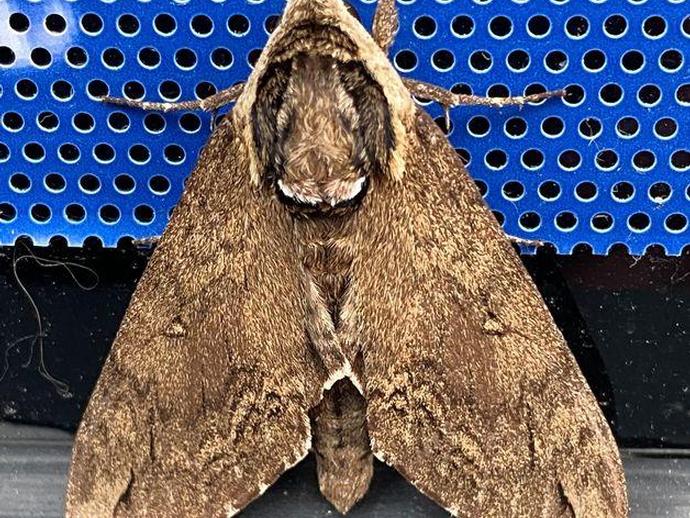September 20, 2021
Ben here with the Monday edition of #BenInNature presented by our friends at Carter Bank & Trust!
I found this catalpa sphinx moth (Ceratomia catalpae) bumming around at a gas station the other day! This large moth may not be particularly showy, but it has an interesting relationship with the tree that gives it its name.
Catalpa moths are found in the eastern half of the U.S., and they occur wherever catalpa trees can be found. Catalpa trees grow beautiful, showy flowers that become long "beanpod" type structures. You might know the tree better by one of its alternate names: "Indian bean tree" or "Catawba."
The caterpillars of these moths feed on catalpa trees exclusively, and on certain years, they can appear in such vast numbers that they will completely defoliate a catalpa tree. In fact, the very first use of aerial crop dusting was an experiment to control catalpa sphinx moths! Oddly enough, however, the caterpillars very rarely kill catalpa trees, and in fact, they may defoliate a tree more than once during a single summer, yet the tree will almost always spring back to full health! Some biologists believe that there may be a symbiotic (mutually beneficial) relationship between the moth and the tree; however, the exact nature of that relationship has yet to be discovered.
ABOUT #BenInNature
Social distancing can be difficult, but it presents a great opportunity to become reacquainted with nature. In this series of posts, Administrator of Science Ben Williams ventures outdoors to record a snapshot of the unique sights that can be found in the natural world. New updates are posted Monday - Friday, with previous posts highlighted on the weekends. This series of posts is made possible thanks to the support of VMNH Corporate Partner Carter Bank & Trust (www.cbtcares.com).
NATURE PHOTO IDENTIFICATIONS
If you discover something in nature that you would like help identifying, be sure to message us right here on Facebook with a picture (please include location and date of picture) and we'll have our experts help you identify it!

 Hours & Admissions
Hours & Admissions Directions
Directions

